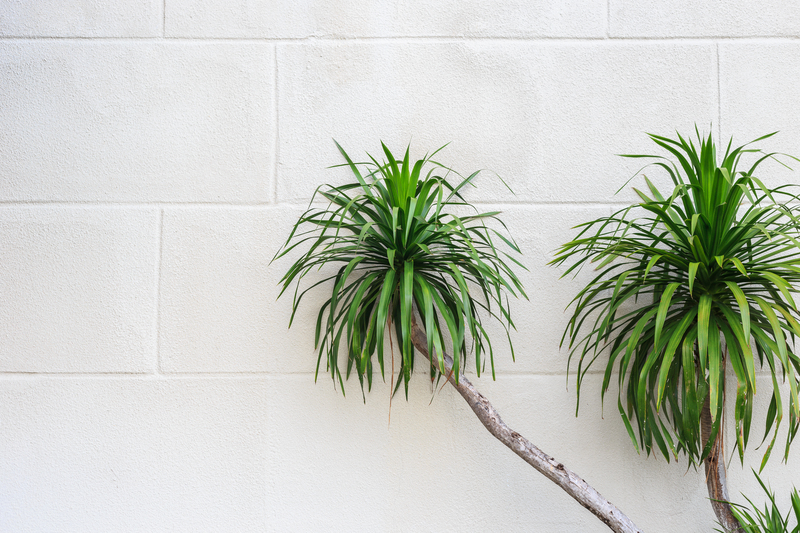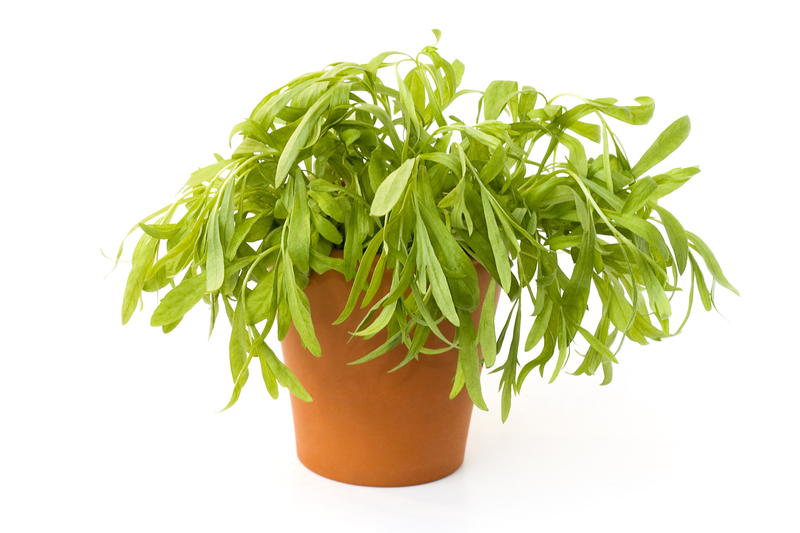Winter Survival Techniques for Your Garden Plants
Posted on 26/06/2025
Ultimate Winter Survival Techniques for Your Garden Plants
Winter's chill can be harsh and unforgiving for even the hardiest garden plants. Whether you're an enthusiastic backyard gardener or a devoted plant lover, protecting your garden during the colder months is essential for ensuring healthy blooms and bountiful harvests next spring. In this comprehensive guide, we'll explore a variety of smart and effective winter survival strategies to keep your garden plants safe, healthy, and ready for the warmer seasons ahead.

Why Winter Protection Matters for Your Garden Plants
While some plants naturally go dormant during the winter months, many can suffer from frostbite, dehydration, and other winter hazards. Understanding plant needs and vulnerabilities is crucial for ensuring they not only survive the winter but emerge stronger in springtime. Investing time now helps secure your efforts from the previous seasons.
Common Winter Threats to Garden Plants
- Frost and Freeze Damage: Sudden drops in temperature can kill sensitive plants or damage growing points.
- Soil Heaving: Repeated freeze/thaw cycles can push plants out of the soil, exposing roots to dry air and cold.
- Desiccation: Dry winds and frozen ground can prevent plants from taking up enough water.
- Heavy Snow and Ice: Excessive weight from snow or ice can break branches and crush plants.
- Pests and Diseases: Certain pests overwinter in garden debris, while disease risk increases with moisture and reduced airflow.
Top Winter Survival Strategies for Garden Plants
1. Choose Hardy Plant Varieties and Site Selection
Planting species that are well-suited to your USDA hardiness zone should always be your first line of defense. Take time to study the microclimates within your garden; areas protected from prevailing winds or near south-facing walls will be naturally warmer and more sheltered. Grouping tender perennials in protected spots can make covering and caring for them easier.
2. Mulching: Nature's Winter Blanket
Mulching is one of the most effective winter survival techniques for garden plants. Apply a generous (3-6 inches) layer of organic mulch--such as shredded leaves, straw, pine needles, or compost--around the base of your plants. This insulates soil, conserves moisture, and stabilizes soil temperature, minimizing soil heaving.
- Mulch after the first hard frost but before consistently freezing temperatures.
- Avoid piling mulch directly on stems or trunks to prevent rot.
- Replenish mulch if winter storms blow it away or compress it.
3. Watering Wisely Before the Deep Freeze
Plants need adequate moisture to withstand cold. Give your garden plants a deep watering before the ground freezes. Proper hydration helps prevent desiccation--especially for evergreens and broadleaf shrubs, which continue to lose moisture through their leaves in winter.
- Water during the warmest part of the day to avoid sudden freezing at night.
- Don't overwater; soggy soil can cause root rot once it freezes solid.
4. Shielding Plants with Physical Barriers and Covers
Protect delicate plants with burlap, frost cloths, or even old sheets. For small shrubs, a simple teepee structure made of stakes covered in burlap provides shelter from wind and snow. Garden fabric "frost blankets" are ideal for vegetable beds and low-growing plants. Secure all covers against wind but allow them to "breathe" to avoid trapping moisture.
- Remove covers temporarily during mild spells to prevent overheating and disease.
- For special specimens, use cloches or cold frames for added protection.
5. Pruning and Staking for Winter Survival
Prune dead or diseased branches from your garden plants in late autumn to prevent breakage under snow load. Staking young trees and top-heavy shrubs keeps them upright during storms and heavy snowfall. Use soft ties to avoid damaging bark and check them periodically to ensure they aren't too tight as trunks expand.
6. Anti-Desiccant Sprays for Evergreen Protection
Evergreen trees and shrubs--such as boxwoods, hollies, and rhododendrons--can lose moisture rapidly in winter winds. Applying an anti-desiccant spray coats foliage to reduce water loss. These sprays are available at most garden centers and can provide a protective film without harming the plant. Always follow label instructions for safe and effective use.
7. Snow and Ice Management
Snow can be both friend and foe. While a thick snow cover insulates soil and roots, heavy, wet snow and ice can damage branches and crush plants. Gently brush off snow with a broom or gloved hand--never shake branches, as frozen wood snaps easily. Allow icicles to melt naturally; forceful removal may cause more skeletal damage.
8. Dealing with Garden Pests in Winter
Many pests use the garden as a winter hiding place. Clearing away dead leaves and stems, cleaning up fallen fruit, and disinfecting garden tools in the fall reduces the risk of overwintering insects and disease outbreaks in spring.
- Consider using wire mesh to protect bulbs and roots from burrowing rodents.
- Bird feeders can divert animal pests from garden plants.
Special Winter Care for Different Garden Plant Types
Protecting Perennials and Bulbs
Perennials often benefit from winter mulching and should be cut back to a few inches above the soil. For tender bulbs (like dahlias or gladiolus) in cold climates, dig them up before the first hard freeze. Allow bulbs to dry, remove any excess soil, and store them in a cool, dry, frost-free area until spring planting.
Caring for Shrubs and Trees in Winter
Young trees and certain shrubs are vulnerable to winter sunscald and rodent damage. Wrap trunks with tree guards or commercial trunk wrap from the base upward. Mound 6-12 inches of soil or mulch around the base of grafted roses or tender shrubs for extra insulation. Remove wraps and mulch in early spring to prevent moisture and disease issues.
Overwintering Container and Potted Plants
Container plants lose heat faster than those in the ground, so they need extra care during winter. Group pots together in a sheltered spot, and wrap them in bubble wrap or burlap to insulate the roots. Consider moving frost-sensitive pots into a garage, basement, or cold frame where temperatures stay above freezing.
- Water sparingly, as container soil dries out quickly and may freeze solid.
- Raise pots off the ground to prevent thaw/freeze cycles.
Keeping Vegetable Gardens Alive in Winter
Cool-season crops like kale, spinach, and carrots tolerate mild winter weather. Extend the harvest by installing low tunnel hoops and covering rows with floating row covers or plastic sheeting. Root crops left in the ground benefit from heavy mulch for insulation and can be harvested as needed.
Planning Ahead: Preparing Your Garden for Future Winters
Build Soil Health Year-Round
Healthy soil holds moisture, drains well, and encourages strong root growth. Add organic matter in autumn and plant cover crops, such as winter rye or hairy vetch, to protect and enrich the soil during winter. Robust soil is your garden's best defense against winter stress.
Experiment with Microclimates
Even small gardens have microclimates--from sunny south walls to sheltered corners and windbreaks. Observe where snow melts first or frost lingers longest, and plan your planting accordingly. Stone walls, fences, and evergreen hedges can provide valuable shelter, while dark mulch can help absorb and retain more heat.
Plan for Gradual Acclimatization
Encourage stronger, winter-ready plants by reducing water and fertilizer in late summer. This signals plants to harden off, making woody tissue less susceptible to winter injury. Avoid heavy late-season pruning, as tender new growth is much more vulnerable to cold damage.

Common Questions About Winter Survival for Garden Plants
How late can I apply mulch for winter?
Apply mulch after the first hard frost but before the soil has frozen solid. If done too early, you may invite pests or delay dormancy, weakening your plants.
Should I trim everything back in fall?
Not always. Perennials are often cut back to minimize pest habitat, but grasses and seed heads can add winter interest and provide food for birds. Leave some stems standing for structure and wildlife.
My region rarely gets snow but lots of rain and ice. What extra precautions should I take?
Ensure excellent drainage so roots don't sit in soggy soil. Consider raising beds and avoid heavy mulches that may trap excessive moisture. Covers and windbreaks help shield plants from icy rain and windburn.
Can I use plastic sheets for frost protection?
Plastic can protect plants from brief cold snaps, but never let it touch the foliage; direct contact may cause freezing damage. Remove plastic during the day to avoid overheating and condensation.
Conclusion: Help Your Garden Thrive Through Winter
Winter need not spell disaster for your garden plants. With careful planning, the right winter survival techniques, and regular observation, your flowers, shrubs, vegetables, and trees can survive--even thrive--through the coldest months. Start now to prepare your garden for winter, and enjoy the rewards of healthy, beautiful plants when spring comes calling again.
- Assess your garden's winter risks and take action accordingly.
- Use mulch, proper watering, and strategic covers for plant protection.
- Keep learning and adjusting as your garden changes over time.
If you cultivate good winter survival habits, your garden will blossom with life, color, and abundance for years to come!


